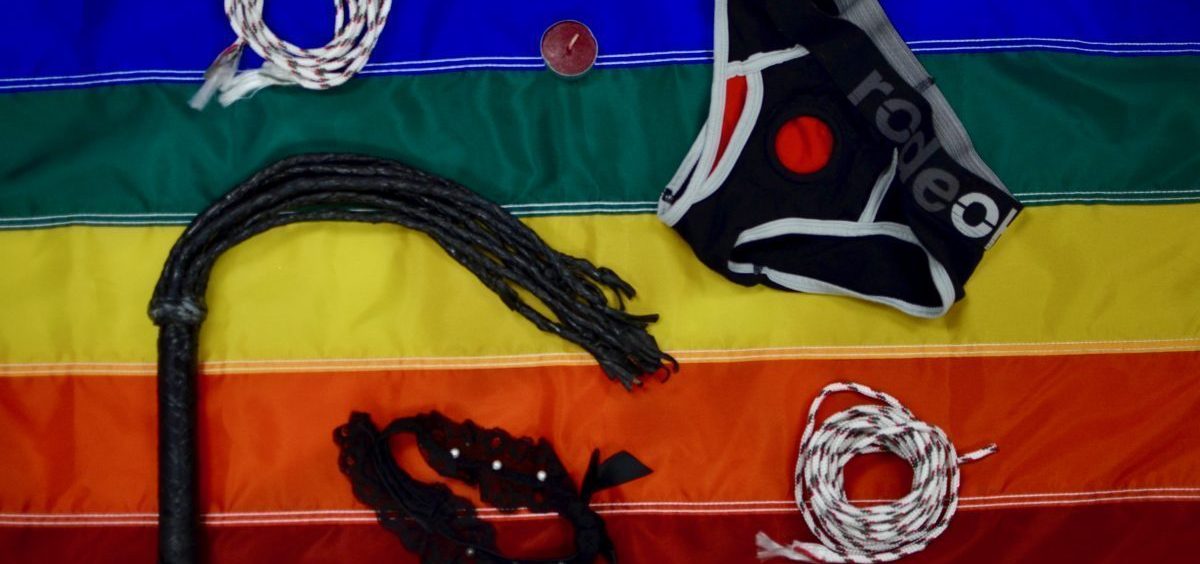
LGBTQ…K?: Kink’s Place in the Alphabet Soup of Queerness
By: Juli Holbert, Ky Cobb
Posted on:
As more people find acceptance in the LGBTQ community for a wide range of sexual and gender identities, conversation within the community has turned to the question of what defines queerness…“Kink” culture has been a visible part of Pride events and parades in the past, but whether BDSM IS queer remains unanswered. In other words; does “K” belong in the LGBTQ acronym?
For Ohio University alumni Phoenix Crane, “kink” is an integral part of her sexual identity.
“Probably in my sophomore year of college at Ohio University is when I started doing research into the realities of what is BDSM,” Crane said.
Kink is defined as “an unconventional sexual taste or behavior.” Many in the “kinky” community subscribe to BDSM as a defining element of their sexuality. BDSM stands for bondage, discipline, sadism and masochism.
There are some people like Crane who believe kink is an essential part of their sexuality and not something they can “choose.”
“And it has its own set of rules, it’s own spectrum in terms of intensity and who you’re interacting with,” Crane said.
And while many members of the LGBTQ community feel the same way about their sexuality, they also believe “kink” is just… not queer.
“Kinky people who are a part of the LGBT community also experience discrimination from within the LGBT community,” Crane said. “Kinkaphobia towards people who are kinky in the LGBT community; they’re outcasted because they think it’s such a taboo subject that they don’t want to talk about it.”
Leigh Ferrero, a queer senior at Ohio University, believes while kink as an identity is valid, it does not belong on the same spectrum as sexuality.
“LGBT people have already been stigmatized so much already, and BDSM has its own stigmas, but I don’t think it’s very fair to equate those,” Ferrero said. “Especially when BDSM is more of a preference-based kind of thing, not so much a sexuality.”
There has been a long battle about the designated “queer” acronym. But the most recent version of the full “alphabet-soup,” so to speak, has grown to a total of 12 figures: LGBTQQIP2SAA.
The acronym stands for lesbian, gay, bisexual, transgender, queer, questioning, intersex, pansexual, two-spirit, androgynous and asexual. It is sometimes used on signs and pamphlets at Pride marches, opening the understanding to a diverse community of people who fall into the queer spectrum.
Some people consider the acronym to still be growing; morphing to represent a broader community of queer people. And that’s where the “K” comes in.
“And I think including ‘K’ into the LGBTQ, ever-growing, acronym, would be diffusing some of the diversity that is already present in that community,” Crane said.
Phoenix’s mixed feelings about whether K should be included makes perfect sense to Patty Stokes, a professor in the Women’s, Gender and Sexuality Studies program at Ohio University.
“If the acronym is there for identification purposes and forging one’s own identity, then I can see why you might want to add the ‘K’ to it,” Stokes said.
Stokes says there is a lot of confusion and nuance in what “qualifies” as queer. “People are already thinking and writing about kink under the banner of queerness.”
While some members of the kink community are also in the queer community, those who are not LGBTQ can still identify with the queer community on many different levels.
“There was one study I read recently by Gemberling, Cramer, and Miller (2015),” Crane said. “They did an analysis to determine if BDSM specifically should be considered a sexual orientation. There was a lot of similar trends regarding sexual behavior, sexual attraction and sexual identity, in terms of age of onset, development, consistency and stability.”
The desire to be “in” the queer community is about a sense of belonging. Many queer individuals view queer spaces, like Pride events, to signify safety and freedom.
“I think it’s very clear. I mean, a lot of the sort of hypersexuality that is on display at a Pride parade, publicly, a lot of that is kinky in nature,” Stokes said.
And many, like Ferrero, feel that though there are intersections of the LGBTQ and BDSM communities, kink should not take a forward-facing stance within the queer community itself.
“It’s the same way that I don’t think there should be an A for ally. You’re not suddenly part of a minority group because you align with the queer community.”
But it’s a complicated issue.
“Instead of creating clarity, we’ve just muddied the waters further and that’s probably okay,” Stokes said.
“By saying it doesn’t belong on the LGBTQ spectrum – well, It does but it doesn’t ‘fit’ in there – doesn’t mean it’s not valid. That shouldn’t be the debate here,” Ferrero said.
For WOUB news, this is Ky Cobb, in collaboration with Juli Holbert.

